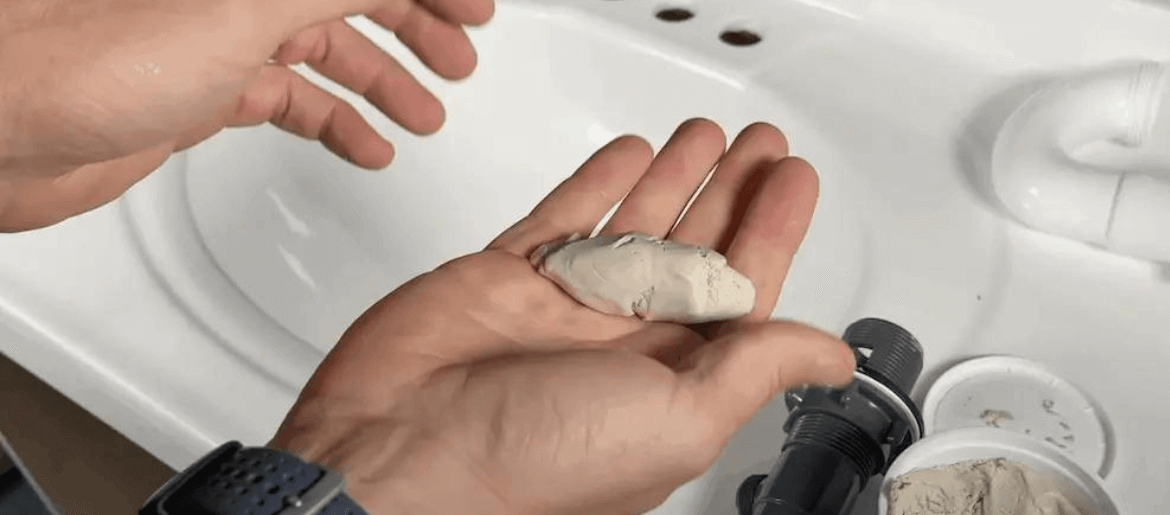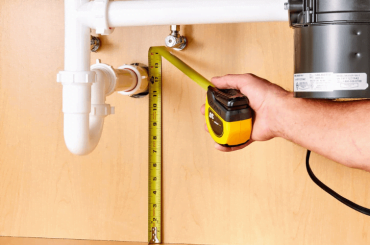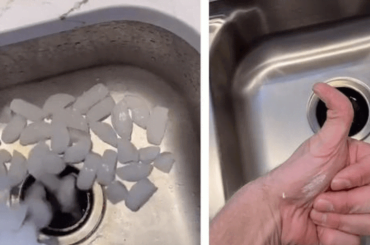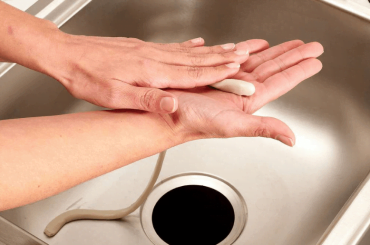Plumbers’ putty is a common sealant that can be used to fix leaks or secure joints. But how long does it take for plumbers’ putty to dry?
In this blog post, we’re going to explore the drying times of plumbers’ putty, as well as some of the best ways to speed up the drying process.
Plumbers Putty Dry Time
The drying time for plumbers’ putty can vary depending on the brand, but it is typically 24 hours. Some brands may have a shorter or longer drying time, so be sure to check the label before use.
There are a few ways to speed up the drying time of plumbers’ putty. One way is to apply a thin layer of the putty and then wait for it to dry before adding more. This will help the putty to dry faster because there is less of it to dry.
Another way to speed up the drying time is to use a hairdryer or heat lamp on low heat. Apply the heat to the area where the putty has been applied. Be sure not to overheat the area, as this can damage the putty.
How can you make sure that your plumber’s putty dries quickly?
There are a few things you can do to help your plumber’s putty dry quickly.
- To ensure your plumber’s putty dries quickly, it is important to use the correct amount. Too much plumber’s putty will take longer to dry and can cause problems with the seal.
- Make sure that the area where you apply the putty is clean and free of any grease or oil.
- You should also make sure that you are using a high-quality plumber’s putty that contains silicones or other ingredients designed to speed up the drying process.
- Additionally, you want to make sure that your plumber’s putty has been given enough time to dry before you apply pressure or weight to it.
- Finally, try to keep the area around the application as dry and free from moisture as possible to allow for faster drying times.
With these tips in mind, you can ensure that your plumber’s putty dries quickly and effectively.
Does Plumber Putty Harden?
The answer is yes, plumbers’ putty hardens over time. However, it takes quite a while to reach its full hardness. Typically, plumbers’ putty takes around 24 hours to fully harden.
This can depend on the size and thickness of the putty and the temperature and humidity level in the area where it is applied.
Plumbers typically recommend waiting at least 24 hours before using or testing any plumbing fixtures that have been recently repaired or installed with plumbers’ putty.
Plumbers putty is ideal for creating seals around sinks, drains, and other plumbing fixtures.
It is easy to apply and forms a tight, waterproof seal that will last for many years. Once the plumber’s putty hardens, it can be sanded, painted, or stained to match the surrounding surfaces.
What to do if the putty doesn’t harden properly?
If the putty doesn’t harden properly follow these simple methods.
1) Use a microwave
If your putty isn’t hardening properly, you can try using a microwave to help speed up the process.
Just put the putty in the microwave for a few seconds and then take it out and knead it again. Repeat this process until the putty is hard enough to use.
2) Use boiling water
Another way to harden the putty is to put it in boiling water for a few minutes.
This will help the putty to harden up quickly.
Just be sure to knead the putty after you take it out of the water so that it doesn’t become too stiff.
3) Add a hardening agent
If you still can’t get your putty to harden, you can try adding a hardening agent to it.
There are a few different types of hardening agents that you can use, so just pick one that you think will work best for your putty.
4) Knead the putty
Finally, if all else fails, you can try kneading the putty for a longer period.
This might take a bit longer, but it should eventually help the putty to harden properly.
5) Add water
If your putty is too hard, you can try adding a bit of water to it. This will make the putty softer and easier to work with. Just be sure not to add too much water or the putty will become too runny.
6) Put it in the fridge
If your putty is still too soft, you can try putting it in the fridge for a bit. This will help to firm up the putty so that it is easier to work with.
Just be sure to take the putty out of the fridge before it gets too hard or it will be difficult to use.
Hopefully, one of these methods will work for you and you’ll be able to get your putty to harden properly. If not, you may need to try a different brand or type of putty.
Also Read: Can You Use Plumbers Putty To Stop A Leak?
FAQs – Plumbers Putty Cure Time
Is plumber putty permanent?
Plumber putty is not a permanent sealant. It is designed to be a temporary measure to prevent leaks until a more permanent fix can be made.
Over time, plumber putty can dry out, crack, and shrink, which will cause it to lose its sealing ability. Plumber putty is not permanent but it can create a watertight seal that will last for many years.
Plumber putty is an ideal material for sealing pipes and fittings, and it can also be used to seal cracks and leaks in plumbing fixtures.
Is it better to use silicone or plumbers’ putty?
This is a difficult question to answer, as there are pros and cons to both silicone and plumbers’ putty. Ultimately, the best option for you will depend on your specific needs and preferences.
Silicone has several advantages over plumbers’ putty. It forms a stronger seal, is more flexible and resistant to temperature changes, and can be used on a wider variety of materials.
However, silicone is also more expensive and difficult to remove once it has been applied.
Plumbers’ putty, on the other hand, is much cheaper than silicone and is easier to remove if necessary. It is also less likely to cause damage to surfaces when applied.
In general, silicone is better for creating waterproof seals, while plumbers’ putty is better for creating airtight seals.
How soon can you run water after using plumbers’ putty?
The amount of time it takes for the plumber’s putty to dry and harden can vary depending on several factors.
Generally speaking, you should wait at least 24 hours before running water over a plumber’s putty seal. This gives the putty adequate time to set and form a tight seal around the plumbing fixtures. It may take longer in some cases, so it is best to follow the manufacturer’s recommendations for drying times.
What is the best way to apply plumbers’ putty?
The best way to apply plumbers’ putty is to roll a rope of the putty about the width of your finger and then press it into place on the fixture you want to seal.
It should be pressed firmly, but not so hard that you damage the surface or create too much pressure. When finished, any excess putty can be trimmed with a putty knife or scraping tool.
Once applied and cured, plumbers’ putty should be inspected periodically for signs of damage or deterioration.
Does the plumber’s putty need to cure?
Yes, a plumber’s putty needs to cure before it can create a waterproof seal. Depending on the type of plumber’s putty used, this curing process could take anywhere from 20 minutes to 24 hours.
After applying the putty to the area that needs sealing, allow for ample curing time before exposing the area to water or other liquids. This will ensure that the seal created by the plumber’s putty is strong and able to withstand water pressure.
If you are unsure of how long your particular type of putty needs to cure, contact the manufacturer for more information.
Is the plumber’s putty waterproof?
No, the plumber’s putty is not waterproof. It is a non-hardening sealant that is used to stop leaks in plumbing fixtures and create watertight seals.
Plumber’s putty should ideally be used only for short-term sealing applications, as it can gradually degrade over time when exposed to moisture or other liquids. It is not recommended for long-term use, as it may eventually fail and allow water to start leaking through the seal.
Can you use plumbers’ putty on stainless steel?
No, plumbers’ putty should not be used on stainless steel. Plumbers’ putty is designed for use with porcelain, ceramic, and other non-porous surfaces.
When applied to stainless steel or other metals, it can cause staining and corrosion of the metal.
Additionally, plumbers’ putty may not adhere effectively to the metal surface and could easily leak or pull away from it. If you’re looking for a sealant for stainless steel, you should use an appropriate silicone sealant instead.
Final Words
From our research, we have found that the plumber’s putty is hardened over time. However, it is not as hard as other products on the market.
The plumber’s putty will still be able to hold up your sink for a long period if it is properly applied. It is important to note that not all types of plumber’s putty will harden.
Some are designed for drainage applications and will never solidify. If you’re ever unsure whether or not your plumber’s putty has hardened, consult a professional before using it.
We hope this blog post will be helpful for you in determining whether or not you should use plumber’s putty in your next project!





